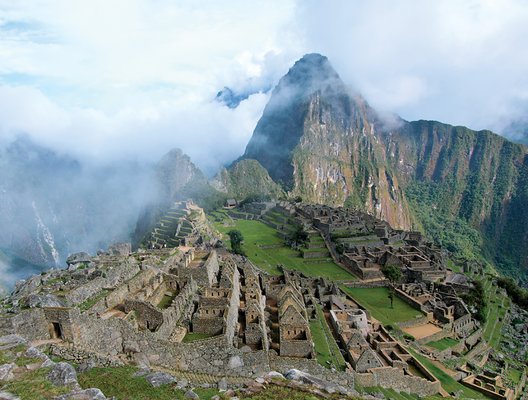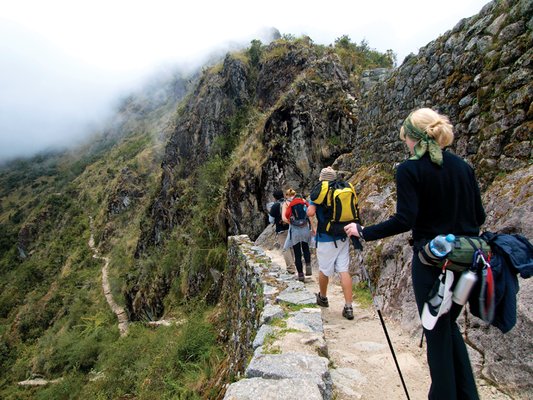
by Mary Caperton Morton Thursday, January 5, 2012

The Inca built Machu Picchu ('Old Mountain') in about A.D. 1400 as an estate for the emperor Pachacuti. Mary Caperton Morton

Mary Caperton Morton
The Inca Trail to Machu Picchu is one of the most popular hikes in the world. It’s so popular that in recent years, the Peruvian government has had to limit trail traffic by plastering the trek with a lot of red tape. You have to apply months ahead for a permit, hire a certified guide and show your passport at four different checkpoints along the way. Despite the hassle, each day hundreds of people sign up. And for good reason: The Inca knew how to lay out a scenic route.
Despite the trek’s popularity, the Inca Trail is not a walk in the park. The route ascends and descends three mountain passes, the highest of which — the forebodingly named Dead Woman’s Pass — soars to a lung-busting 4,215 meters above sea level. After climbing over three high-altitude passes in two days, tired legs have to deal with a descent so steep and treacherous that guides have nicknamed it the Gringo Killer. For much of the year the sun is blistering, nights are frigid, rain is always a possibility and mosquitoes can be a plague.
Such are the challenges you might expect hiking in the second-highest mountain range on the planet. The Andes run for 7,000 kilometers along the west coast of South America, with peaks averaging 4,000 meters above sea level, and the tallest, Aconcagua in Argentina, rising to nearly 7,000 meters. Many regions of the Andes are still actively rising. Tectonic forces at work along the entire west coast of South America, where the Nazca Plate and a part of the Antarctic Plate are sliding beneath the South American Plate, continuously produce earthquakes, volcanic eruptions and uplift.
The rocks underlying Machu Picchu and the surrounding Urubamba River Valley are mainly diorite, the intrusive variety of andesite, formed underground in vast plutons of volcanic rock. The Inca used this hard gray rock, which is relatively rare worldwide but plentiful in Peru, to construct their stone cities and pave the Inca Trail.
© 2008-2021. All rights reserved. Any copying, redistribution or retransmission of any of the contents of this service without the expressed written permission of the American Geosciences Institute is expressly prohibited. Click here for all copyright requests.